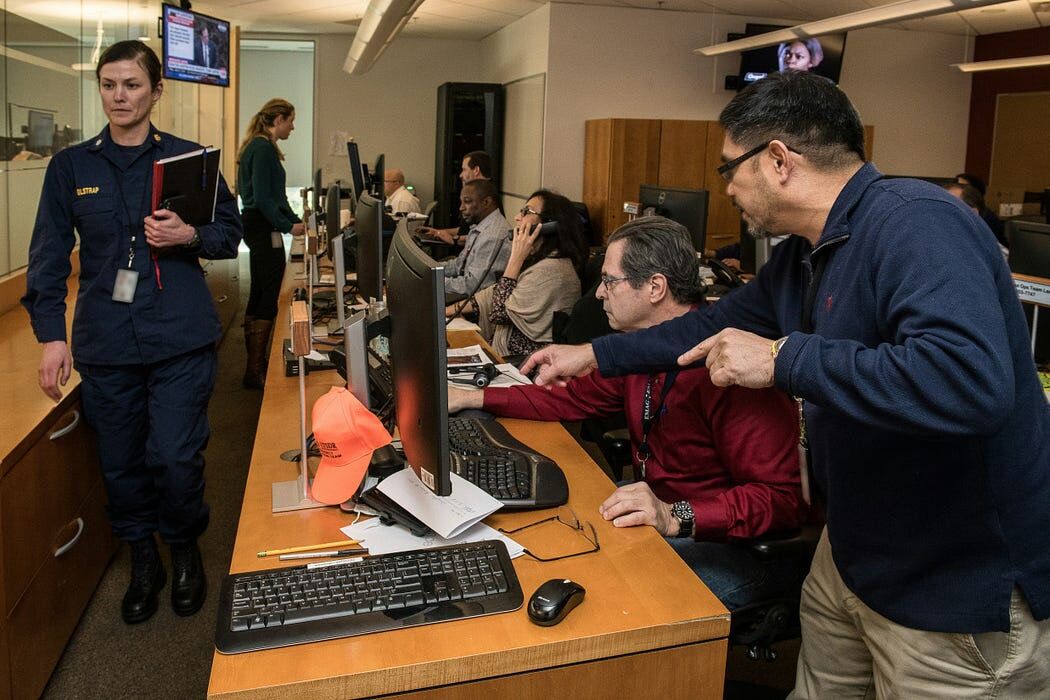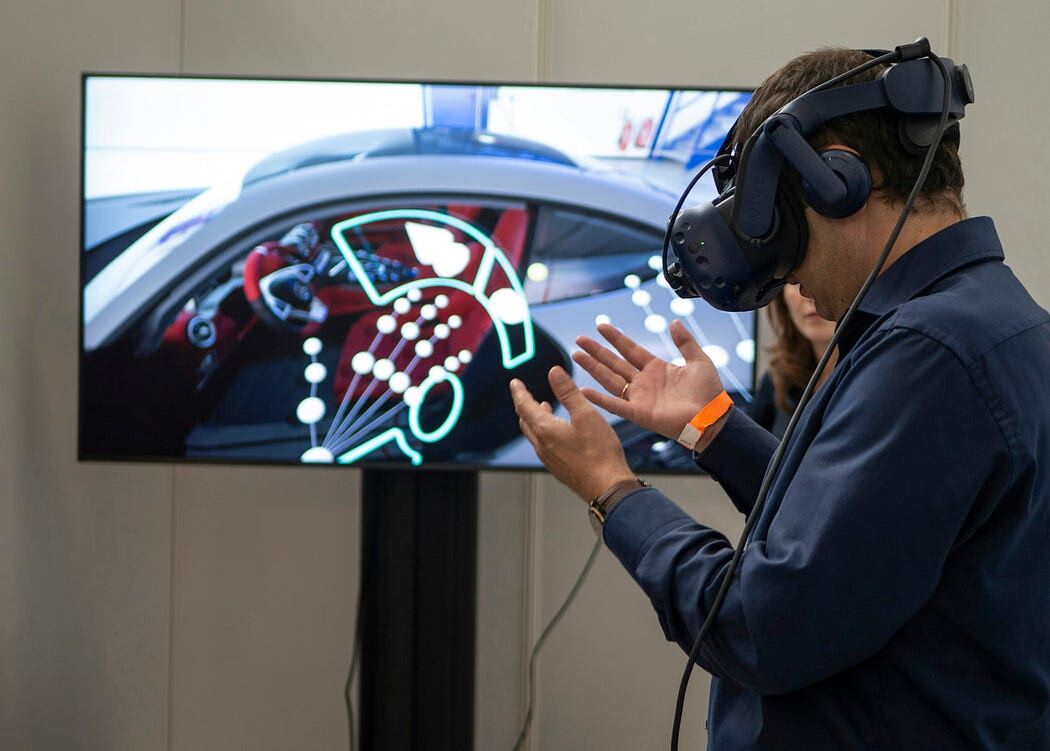
Mustafa Kürşat Yalçın
7 Min Read
AI-enhanced Virtual Reality is transforming training into an engaging, interactive experience. Say goodbye to dull sessions and hello to immersive development.
Introduction
Virtual reality has evolved from a niche gaming technology into a crucial tool for corporate training. However, with AI-enhanced virtual reality (VR), this leap has become even more significant. By merging Artificial Intelligence (AI) with immersive VR environments, companies can create highly interactive and adaptive training experiences that are personalized, data-driven, and effective.
The fusion of AI and VR provides more than just simulated environments; it adapts in real-time based on each user's performance, allowing employees to gain practical experience that matches real-world complexities.
Let’s delve deeper into how this technological synergy is transforming corporate training and development!
The Synergy Between AI and Virtual Reality
Combining AI with VR creates a training experience that becomes smarter with each interaction. While VR immerses the learner into a lifelike environment, AI enhances the experience by adapting the simulation to the user’s progress and learning style.
A PwC study found that learners in VR-based environments were four times faster at learning compared to traditional classroom training. The immersive nature of VR — paired with AI’s ability to analyze each user’s strengths and weaknesses — creates a dynamic learning experience that is far more efficient and effective.
According to Gartner, by 2024, 50% of large global companies are expected to deploy AI-enhanced VR training programs to upskill employees in key areas, significantly increasing learning effectiveness.
Why It Works:
Real-Time Feedback: AI offers personalized, immediate feedback, helping learners quickly identify and correct mistakes. This reduces the need for delayed assessments and supports continuous learning.
Adaptive Learning: AI dynamically adjusts the simulation’s difficulty based on an employee’s skill level, providing a personalized learning journey that keeps employees engaged.
Behavioral Analysis: AI tracks behavioral patterns to offer detailed insights into employee progress. It identifies knowledge gaps and suggests tailored follow-up exercises, ensuring that training programs are data-driven and specific to each employee’s needs.
Creating Safe, Risk-Free Learning Environments
One of the most significant advantages of using AI-enhanced VR for training is the ability to simulate real-world scenarios in a completely risk-free environment. Industries such as construction, manufacturing, and healthcare — where handling hazardous materials, operating heavy machinery, or performing life-saving surgeries are common — can use this technology to train their workforce safely.
Take BP, for example. The oil and gas giant uses AI-enhanced VR to train its workers on offshore rig operations, emergency protocols, and safety procedures. Employees can practice controlling oil spills or handling rig shutdowns without risking actual disasters. According to BP, using VR for training has reduced real-life safety incidents by 30% within their offshore workforce.
In addition, AI-enhanced VR allows industries to save costs associated with creating physical simulations. A Harvard Business Review study highlighted that companies using VR and AI for simulations in high-risk environments saw a 50% reduction in training-related expenses thanks to fewer real-world resources being required.
Enhanced Employee Engagement and Retention
Employee engagement is often one of the biggest challenges in traditional training. When learners are presented with boring presentations or passive e-learning modules, they tend to disengage quickly. AI-enhanced VR, on the other hand, keeps employees engaged by creating interactive, challenging, and immersive experiences.
According to a study by Stanford University, employees who trained using AI-enhanced VR reported a 30% higher engagement level compared to those using more traditional e-learning platforms. This interactive, game-like environment encourages employees to remain attentive, helping them retain information longer.
A report from Deloitte Insights emphasized that companies using immersive training technologies, such as VR, saw 80% higher retention rates after six months compared to companies using classroom-based training. This higher retention rate translates into more effective resource use and less frequent retraining.
Why Engagement Matters:
Increased Knowledge Retention: Immersive environments enable employees to apply concepts in real-world situations, which increases memory retention.
Higher Completion Rates: Employees are more likely to complete training programs when the content is engaging and relevant.
More Enthusiastic Participation: Interactive and tailored learning experiences keep employees motivated, ensuring they don’t see training as a box-ticking exercise.
Addressing Soft Skills and Leadership Development
It’s not just technical or safety skills that can benefit from AI-enhanced VR — soft skills like leadership, communication, and emotional intelligence can also be developed using this technology. With AI-enhanced VR, employees can simulate difficult interpersonal situations, such as negotiating contracts, mediating conflicts, or leading teams under stressful conditions. AI analyzes their decisions and interactions in real time, offering personalized feedback on how to improve.
For example, Verizon has successfully integrated AI-enhanced VR to train its employees on handling armed robbery scenarios in retail stores. Verizon’s employees undergo various high-stress, realistic simulations where they must make quick decisions, communicate effectively, and ensure customer safety. The results? Verizon reported that incidents of errors during actual robbery situations dropped by 20%, and employees felt more confident in handling similar real-life challenges.
Why AI and VR Are Effective for Soft Skills:
Practice Under Pressure: Employees can practice responding to high-stakes situations without the fear of making irreversible mistakes.
Emotional Intelligence Development: VR can help develop better emotional intelligence and interpersonal skills by placing employees in challenging social interactions.
Leadership Development: Leaders can practice decision-making in crisis situations, improving their confidence in leading teams.
Real-Time Data and Analytics: A Hidden Goldmine
AI doesn’t just enhance the learning experience for employees — it also provides employers with invaluable data. By tracking every interaction within the VR environment, AI-powered analytics can provide deep insights into employee performance, strengths, and weaknesses. This means training programs can be fine-tuned based on real-time data, ensuring that employees are developing the right skills.
For example, Walmart uses AI-enhanced VR to assess employees’ management of high-stress situations like Black Friday sales. By analyzing how employees interact with the simulated customers, Walmart is able to identify individuals who have a natural aptitude for leadership and customer management. This data-driven approach has enabled Walmart to place employees in roles where they excel, improving overall store performance and reducing turnover.
A McKinsey & Company report revealed that companies using AI to personalize training experienced a 35% increase in employee performance post-training compared to companies using generic training programs.
Case Study: Walmart’s AI-Enhanced VR Training Program
Walmart has become one of the leading examples of how AI-enhanced VR can transform corporate training on a large scale. In 2017, Walmart introduced VR training to teach its employees to handle various in-store scenarios. Today, the retail giant has expanded the program across all of its U.S. stores, training over a million employees using AI-enhanced VR.
The Challenge
Before adopting VR, Walmart struggled with consistency in training across its vast network of stores. Different locations used different training methods, and employees had difficulty retaining knowledge, especially during high-pressure situations like Black Friday sales or handling customer disputes.
The Solution
Walmart partnered with STRIVR, a VR and AI platform that creates immersive training environments. Employees were able to practice scenarios such as managing Black Friday crowds, operating new technology at self-checkout stations, and even handling potential emergencies like a store robbery. AI provided real-time feedback during the simulations, tailoring the scenarios based on each employee’s performance and stress level.
The Results
Training Time Cut in Half: Walmart found that VR-trained employees learned twice as fast as those trained with traditional methods.
Improved Retention: Employees retained knowledge 30% longer, leading to less frequent retraining.
Increased Confidence: Post-training surveys showed that 85% of employees felt more confident in handling real-world situations after their VR training sessions.
Walmart’s success with AI-enhanced VR has led to improved employee satisfaction, retention, and operational efficiency, proving that immersive, intelligent training is not only scalable but effective for businesses of all sizes.

Conclusion
AI-enhanced Virtual Reality is transforming training into an engaging, interactive experience. Say goodbye to dull sessions and hello to immersive development.









